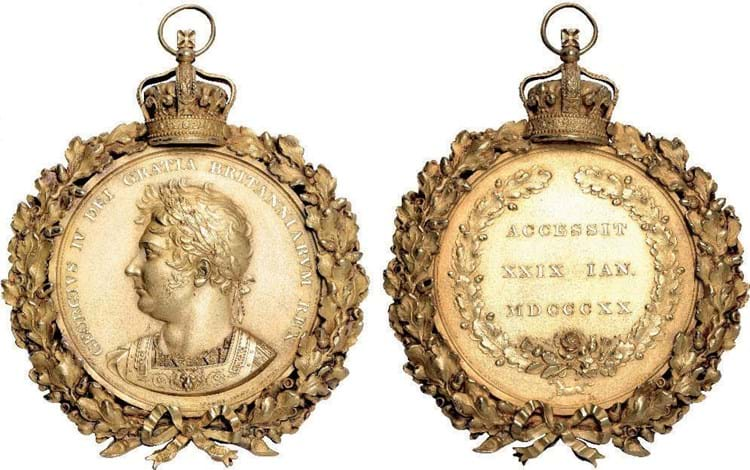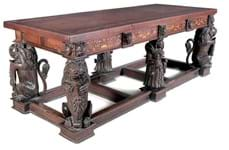
The archive of some 800 British proclamation, accession and coronation medals sold in 450 lots during Coinex week on September 26, spanned the coronations of Edward VI (February 20, 1547) to Elizabeth II (June 2, 1953).
The silver-gilt medal by Rundell, Bridge and Rundell unusually bears the maker’s mark PR of Philip Rundell (1746-1827) himself – a clue to its royal commission.
Rundell’s client was the new king himself with the medal made for presentation to Princess Augusta Sophia (1768-1840), his 52-year-old sister.
The medal itself is well known in bronze. The obverse shows George, his laureate and draped bust turned to the left, the reverse notes the date of accession (January 29, 1820). The whole is set within an oak wreath fastened with the rose, thistle and shamrock and the Hanoverian horse below. It is the first medal to incorporate the national flowers – a patriotic device believed to be of the king’s own creation.
When Laurence Brown published his British Historical Medals in 1980, he devoted a whole page to this piece – the only medal in three volumes to get such treatment – and published it alongside the accounts of Messrs.
Rundell, Bridge and Rundell. These record: ‘1820 31st July. A large silver gilt medal on the King’s Accession His Majesty’s Profile on one side & device reverse with wreath of oak & acorn chased and crown over all for Her Royal Highness The Princess Augusta £15.15.0’. Some time later (August 12, 1822) the bill was paid by the Privy Purse.
The medal, that last passed through Baldwins hands in 1979, carried an estimate of £5000-8000. That proved a little ambitious but it sold nonetheless at £4200 (plus buyer’s premium).














